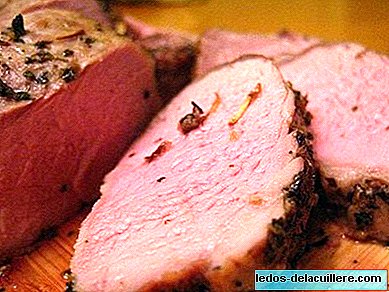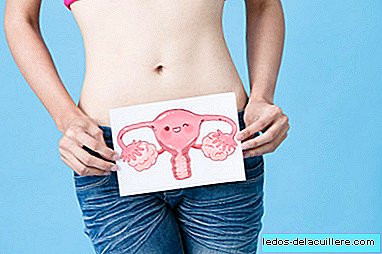
To end the chapter dedicated to meat in infant feeding, we focus on two types of meat very consumed: the veal and the pig.
After introducing white meat, chicken, turkey and rabbit at six months of age and later, around seven months, lamb and goat meat, if you usually consume it at home, the next step is the introduction of beef and pork.
According to the Spanish Association of Pediatrics is introduced after eight months, although there are very varied criteria. Some pediatricians advise them after 10 months and even after one year.
Being meat with a higher fat content difficult to remove (unlike the lamb and the kid that is concentrated under the skin and easily removed), wait a few months until the baby's stomach is better prepared to digest them.
Veal

Veal It is the product of the animal less than one year old fed only with breast milk. Its color is lighter and its flavor softer.
Veal is a more digestible meat than beef, since it contains less fat. That of a larger animal has intramuscular fat with a higher content of saturated fatty acids. That is why to offer babies, beef is more preferable, lean and digestible.
As for the nutritional value, it provides high quality proteins, vitamins, mainly vitamin B2 and minerals, mainly easily absorbed iron.
How to prepare veal
It is important to define what is the most appropriate part to offer the baby, since the proportion of fat varies depending on the piece of the animal. For example, chops are more fat than sirloin.
For the baby, it is best to choose less fat parts such as sirloin or tenderloin fillets having first removed the visible fat part.
The way to prepare it is also important since cooking it loses a good part of the water-soluble nutrients it contains.
The temperature that the meat must reach when cooking is 70 degrees, since the bacteria die at this temperature, the collagen dissolves and the meat becomes more tender.
When cooked on the grill, on the grill or in the oven, check that it does not roast too much because at high temperatures chemical reactions of high toxicity occur.
Pork meat

Pork meat, like that of beef, it has a high fat content, but "good" fats. It contains saturated fatty acids, but its proportion of monounsaturated fatty acids (good fat) is higher than other meats.
As for nutritional properties, pork provides protein, in greater quantity in a lean piece, and a moderate proportion of cholesterol.
Among the minerals, iron easily assimilated by the body stands out, and among the vitamins, thiamine or vitamin B1, which contains between 8 and 10 times more than the rest of the meats.
Thiamine is involved in the formation of food in energy, is essential in the functioning of the nervous system, contributes to the growth and maintenance of the skin.
How to prepare pork
As in the case of veal, there are large variations of fat depending on the part of the pig consumed.
The most suitable to offer the baby are the lean parts of the pig such as the sirloin, the tenderloin, but the shoulder or the ham. Other parts such as chops or bacon have too high proportions of fat. It is recommended to choose pieces from the back of the pig because it contains better quality proteins.
Sausages and deli are also not suitable for young children because they contain preservatives and excess fats and salt.
As for cooking it is similar to that of veal. It can be boiled, roasted, grilled, grilled, avoiding overflowing and breaded until it is found that the baby is not allergic to the egg or the glute.
The preparation in both cases, both veal and pork, is to crush about 20 grams of meat in the vegetable puree.
It can also be cut into strips for sucking and undoing, always under the supervision of an adult because of the risk of choking, but only when he is able to chew can he offer meats cut into pieces.












